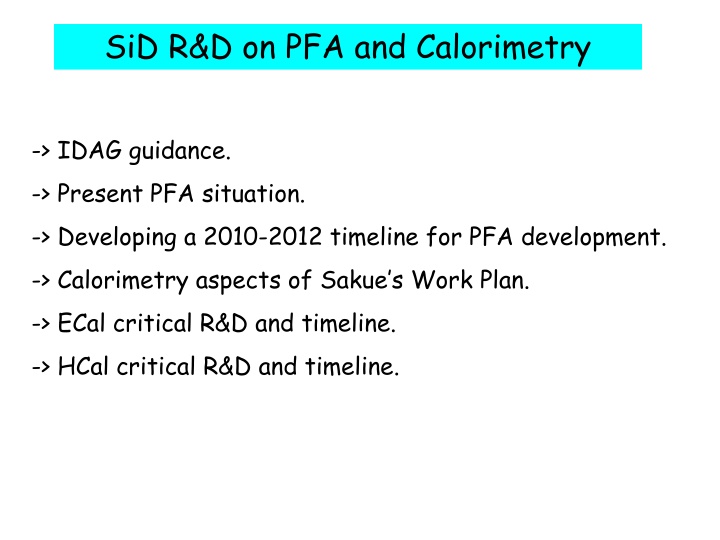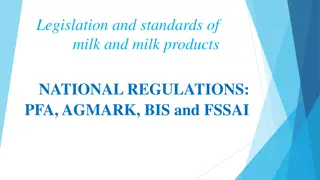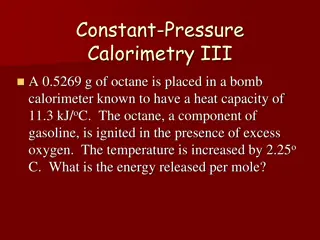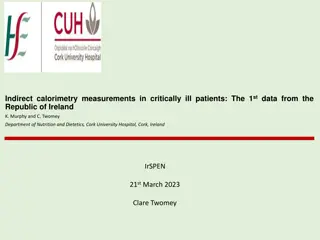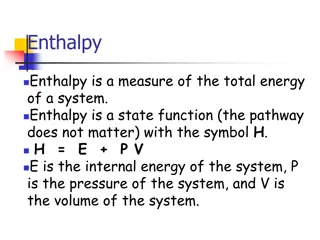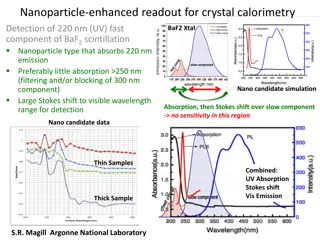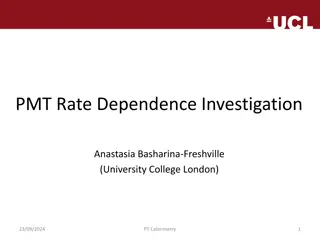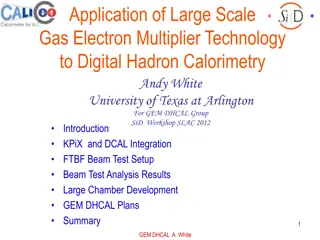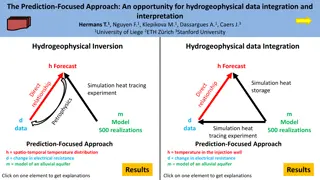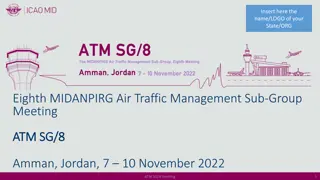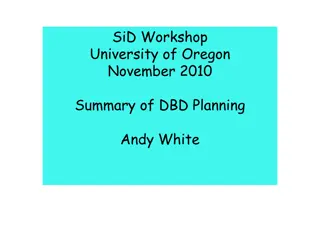Development and Planning of PFA and Calorimetry in SiD R&D
The content discusses the research and development efforts related to Particle Flow Analysis (PFA) and Calorimetry, focusing on timelines, R&D guidance, and ongoing activities aimed at enhancing detector setups for realistic analysis. Efforts include algorithm optimization, validation, and collaboration for future advancements in the field.
Download Presentation

Please find below an Image/Link to download the presentation.
The content on the website is provided AS IS for your information and personal use only. It may not be sold, licensed, or shared on other websites without obtaining consent from the author.If you encounter any issues during the download, it is possible that the publisher has removed the file from their server.
You are allowed to download the files provided on this website for personal or commercial use, subject to the condition that they are used lawfully. All files are the property of their respective owners.
The content on the website is provided AS IS for your information and personal use only. It may not be sold, licensed, or shared on other websites without obtaining consent from the author.
E N D
Presentation Transcript
SiD R&D on PFA and Calorimetry -> IDAG guidance. -> Present PFA situation. -> Developing a 2010-2012 timeline for PFA development. -> Calorimetry aspects of Sakue s Work Plan. -> ECal critical R&D and timeline. -> HCal critical R&D and timeline.
PFA planning through 2012 Relevant aspects of the Work Plan: -> Timeline of PFA development and availability relevant to expected further benchmark requirements (yet to be defined)? -> Convergence of: Simulation/Reconstruction/Optimization/Benchmarking
IDAG guidance on Cal/PFA The R&D program should validate the expectations of PF analysis with large detector set-ups and realistic conditions. It should also clarify whether specific design values (e.g. the depth of the hadronic calorimeter) or figures of merit related to jet reconstruction are fully understood. Additionally, R&D programs should contribute to design choices in areas where different options appear possible (e.g.: detector technology for the vertex detector and its readout; for the active elements in the hadronic calorimeter and in the muon detector/tail catcher; options for digital readout of the electromagnetic calorimeter; options for high-performance calorimeters based on the alternative approach of multiple readout.)
PFA planning through 2012 Current PFA effort aimed at regrouping after the LOI/validation effort. Focusing effort on SiD (Iowa) algorithm. Usha and Iowa deconstructing Mat s algorithm and will provide detailed write-up, facilitating future work by others on development. MIT has been working on optimization and will work on algorithm development. There is the possibility of getting some UG support. SLAC additional person/people for PFA? ANL contribution to SiD PFA development?
Norman is visiting University of Cambridge to discuss making an SiD compatible version of PANDORA/PFA plans for using this version? Steve is working on studies of dual-readout calorimetry with Adam support for this effort in light of demise of 4th? DoE/NSF via Kansas additional support, what level, where?? ----------------------------------------------------------------------------- Initial period of reforming a team to work on SiD PFA: 2 months Defining longer term goals who works on which pieces? - who tests new versions? - who assists with new benchmark specified processes? - what higher energies do we study/interworking with CLIC?
Understanding dependency of PFA performance on technology choices. Running PFA on fully detailed simulation(s) of calorimetry.
Calorimetry planning through 2012 Relevant aspects of the Work Plan:
IDAG guidance on Cal/PFA The R&D program should validate the expectations of PF analysis with large detector set-ups and realistic conditions. It should also clarify whether specific design values (e.g. the depth of the hadronic calorimeter) or figures of merit related to jet reconstruction are fully understood. Additionally, R&D programs should contribute to design choices in areas where different options appear possible (e.g.: detector technology for the vertex detector and its readout; for the active elements in the hadronic calorimeter and in the muon detector/tail catcher; options for digital readout of the electromagnetic calorimeter; options for high-performance calorimeters based on the alternative approach of multiple readout.)
ECal planning through 2012 For the baseline silicon-tungsten Ecal design, the operability of a fully integrated active layer inside the projected 1.25mm gap between absorber plates must be demonstrated. Sufficient S/N, successful signal extraction, pulse powering, and adequate cooling must be shown as well. Mechanical prototypes with steel rather than tungsten will first be built, followed by a full depth tower appropriate for beam tests. For the alternative MAPS technology being investigated in the U.K., a key need is production of large sensors with sufficient yield. -> Timeline for the various Si/W ECal baseline development stages -> Timeline for full simulation of Si/W ECal -> Review of current R&D resources for Si/W baseline -> Timeline for development of MAPS alternative -> Review of resources for MAPS development
HCal planning through 2012 The priority for hadronic calorimetry is to demonstrate the feasibility of assembling a fully integrated, full-size active layer within a ~8mm gap between absorber plates. Several technologies are being investigated: RPC s, MEGAS, GEM s, and scintillating tiles/SiPM s. A European project studies micromegas layers. All of this work is being carried in conjunction with the CALICE Collaboration, and the results will form a critical component of SiD s future technology selection. An alternative approach, using homogeneous crystal calorimetry with dual readout, is also being studied. This effort needs to demonstrate good hadronic energy linearity and resolution in a test beam, to develop suitable crystals, to produce a realistic conceptual design, and to simulate physics performance. -> Timeline for RPC/baseline data taking in CALICE stack -> Timeline for analysis of data from RPC stack -> Timeline for full simulation for RPC baseline -> Profile of support for complete data taking/analysis of RPC baseline -> Timeline for fully integrated/full size active layer (readout??) -> Repeat above for GEM, Micromegas, Scintillator and Dual readout ? What should be our requirements for alternative technologies for the TDR?
-> SiD policy on readout (KPiX,) for the various technologies. -> Arguments for support needed for alternative technologies (labs, universities). ->
